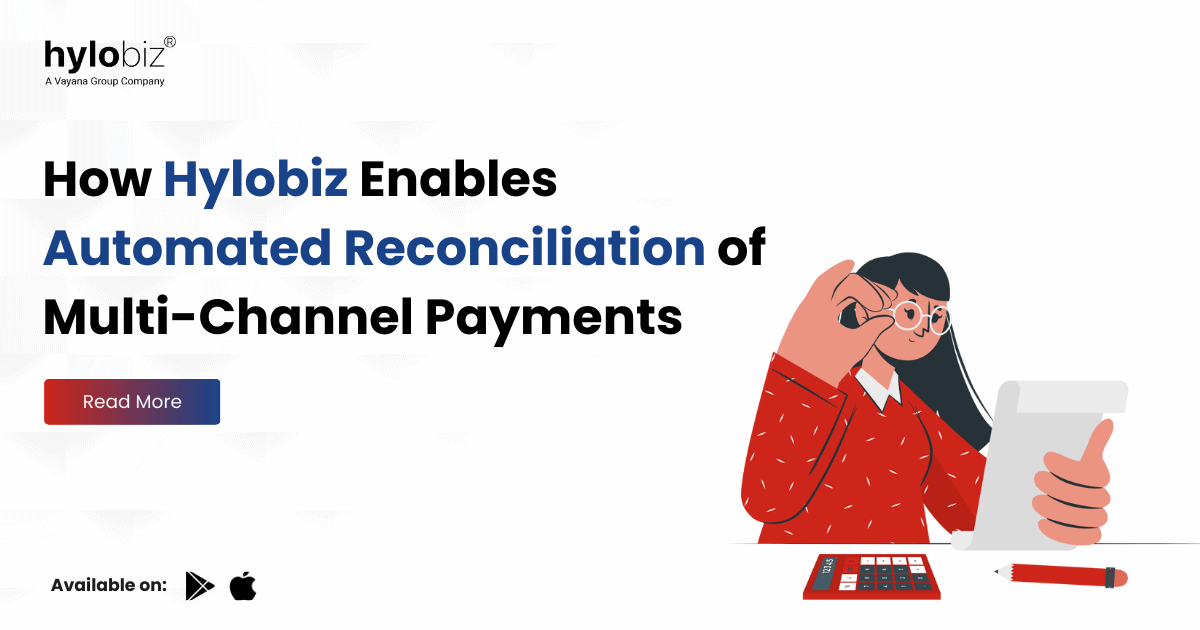Today’s businesses operate in a dynamic environment where corporate entities operate across a multitude of channels. From traditional methods like bank transfers and checks to modern digital solutions such as online payment gateways, mobile wallets, and POS systems, the flow of funds is diverse and complex.
While this variety offers convenience and caters to customer preferences, it also presents a significant challenge: payment reconciliation. So, are you looking for the ultimate automated reconciliation tool?
The Rise of Multi-Channel Payments and the Reconciliation Challenge
Business customers pay through various online and offline channels. This shift offers increased customer convenience and expands sales opportunities. However, it also introduces a significant challenge for finance teams: reconciling payments from these disparate sources.
Automated reconciliation processes are a swift solution to address these business issues. This blog post will explore the challenges of multi-channel payment reconciliation and provide strategies and solutions for businesses to effectively manage this complex process.
What is automated reconciliation?
Automated reconciliation involves using software solutions to automatically match incoming payments with corresponding invoices, based on predefined rules.
Why is Payment Reconciliation Important?
Payment reconciliation ensures that the funds received align with the expected amounts and that all transactions are accurately recorded. Accurate automated reconciliation processes are crucial for several reasons:
- Financial reporting, internal decision-making, investor reporting, and regulatory compliance.
- Cash flow management, investments, and financial planning.
- Audit trails, identify discrepancies, and prevent fraud.
- Error detection.
Challenges of Reconciling Payments from Different Channels
Reconciling payments from multiple channels presents several significant challenges for businesses:
- Manual Effort and Time Consumption: Manually matching payments from different sources is a time-consuming and labor-intensive process.
- Increased Risk of Errors: The complexity of dealing with various data formats and large volumes of transactions increases discrepancies and produces inaccurate financial records.
- Lack of Real-Time Visibility: Businesses often struggle to gain a clear and up-to-the-minute view of their cash flow when dealing with multiple payment channels.
- Data Inconsistencies: Different payment channels may use varying data formats, reporting fields, and transaction identifiers.
- Settlement Delays and Timing Differences: Payment channels have different settlement times, meaning that funds may not be available in the business’s account immediately after a transaction. This timing difference creates challenges in reconciling payments and accurately reflecting the cash position.
- Higher Operational Costs: Increased labor costs, operational expenses, and potential financial losses lead to errors or delays.
Strategies for Effective Multi-Channel Payment Reconciliation
To overcome the challenges of multi-channel payment reconciliation, businesses can adopt several strategies and best practices around automated reconciliation solutions:
- Centralized Payment Platform: Implementing a centralized platform that integrates with all payment channels, capturing data from various sources and providing a unified view of all transactions.
- Automation and Software Solutions: Automating the reconciliation process by matching incoming payments with corresponding invoices based on predefined rules.
- Standardized Reporting and Data Formats: Enforcing standardized reporting formats across all payment channels can simplify data aggregation and matching.
- Real-Time Data Access and Reporting: Businesses need systems that provide up-to-the-minute information on incoming payments, allowing for proactive tracking and issue resolution.
- Virtual Account Utilization: Utilizing virtual accounts can greatly enhance reconciliation accuracy. Virtual accounts provide unique identifiers for each transaction, making it easier to match payments automatically.
Technology Solutions: How Hylobiz Simplifies Reconciliation
Technology solutions like Hylobiz are designed to address the complexities of multi-channel payment reconciliation. Hylobiz offers features and capabilities that empower businesses to streamline their processes using automated reconciliation to improve accuracy, and gain better control over their finances.
These include:
- Integration with Various Payment Gateways and Channels: Hylobiz seamlessly integrates with a wide range of payment gateways, banks, and other payment channels, providing a centralized platform for managing and reconciling transactions from diverse sources.
- Automated Reconciliation Processes: Hylobiz automates the reconciliation process by automatically matching incoming payments with corresponding invoices, based on predefined rules and algorithms. This eliminates manual effort, reduces errors, and accelerates the reconciliation cycle.
- Real-Time Dashboards and Reporting: Hylobiz provides real-time dashboards and reporting tools that offer a clear and up-to-the-minute view of payment transactions. This enables businesses to track payments, identify discrepancies, and monitor their cash flow effectively.
- Virtual Account Management: Hylobiz facilitates the use of virtual accounts, which provide unique identifiers for each transaction, making it easier to match payments automatically and improve reconciliation accuracy.
The Future of Automated Reconciliation: Trends and Innovations
The future of payment reconciliation is being shaped by emerging trends and innovations, including:
- AI-Powered Reconciliation: Artificial intelligence (AI) is being used to automate complex reconciliation tasks, detect anomalies, and improve accuracy.
- Blockchain Technology for Reconciliation: Blockchain offers the potential for secure and transparent transaction records, which can streamline reconciliation processes.
- Real-Time Reconciliation Solutions: Real-time reconciliation solutions are emerging, providing businesses with instant visibility into payment transactions and cash flow.
Embracing Technology for Seamless Reconciliation
Reconciling payments from diverse channels is a significant challenge for businesses in today’s digital age. However, by adopting the right strategies and leveraging technology solutions, businesses can overcome these hurdles.
Implementing a centralized platform, automating processes, standardizing reporting, and utilizing virtual accounts are key steps towards achieving efficient, accurate, and timely payment reconciliation. Embracing technology and innovation is crucial for businesses seeking to navigate the multi-channel payment landscape and achieve seamless financial operations.
What is reconciliation in billing?
Reconciliation in billing is the process of matching incoming payments with the corresponding invoices, transactions, or accounts receivable records.
Does Hylobiz provide real-time reporting for automated reconciliation?
Yes, Hylobiz offers real-time dashboards and reporting tools to track payments, identify discrepancies, and monitor cash flow effectively during the automated reconciliation process.
How do virtual accounts in Hylobiz aid in automated reconciliation?
Hylobiz facilitates the use of virtual accounts, which provide unique identifiers for each transaction, making it easier to match payments automatically and improve reconciliation accuracy.

